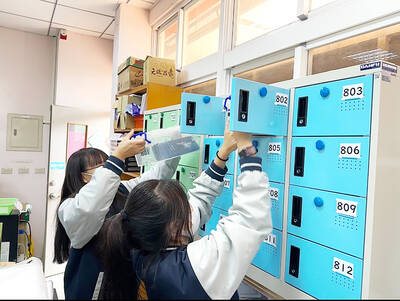Premier William Lai (賴清德) yesterday said that he would step down “when the time is right” to take political responsibility for the Democratic Progressive Party’s (DPP) heavy losses in the Nov. 24 nine-in-one elections.
“Taking political responsibility is the supreme value of democracy that no one should ever go against. I am a person who preaches ‘long live democracy,’” Lai told a news conference at the Executive Yuan.
Asked whether the right time would be when the Legislative Yuan breaks for a recess next month or in 2020 for the presidential election, Lai did not elaborate.

Photo: Liao Chen-huei, Taipei Times
The legislative session is scheduled to end on Dec. 31, but an extra session is likely to be held next month if next year’s budget is not passed by the end of the year.
Lai on election night offered his verbal resignation to President Tsai Ing-wen (蔡英文), saying that the results reflected public dissatisfaction with the government for which he has to shoulder responsibility.
Tsai, who resigned as DPP chairperson that night, did not accept his resignation and told Lai to stay “in the interest of political stability and continuity.”
On Nov. 26, Lai said he would remain in his post, because he was scheduled to deliver a report on the Oct. 21 Puyuma Express train derailment to the legislature the next day and must continue the Executive Yuan’s efforts to pass next year’s budget and other bills.
Lai yesterday said that he had accepted Tsai’s offer to serve as premier in September last year against the advice of many of his friends, because the government was already in a bit of a predicament at the time.
“I wanted to help, but it turned out a year later that it did not work out well,” he said.
Lai said he decided to stay on as premier regardless of the criticism heaped on him, which was “not for my own good, but rather for the interest of the whole nation.”
“I am utterly resolute in stepping down when the time is right to shoulder political responsibility. What we have learned from the elections about our mistakes will surely be addressed and will not just be empty words,” he said.
Only when he resigns as premier would Tsai have room to embark upon her agenda in a more vigorous way, he said.
Lai also presented a report detailing what the Cabinet saw as causes of public dissatisfaction with its policy planning and implementation.
He cited the government’s failure to ensure that the effects of the nation’s economic growth would trickle down to ordinary people, to protect the rights and welfare of farmers and fishers, and to spread the tourism benefits created by the increasing numbers of visitors from countries targeted by Tsai’s New Southbound Policy to the eastern and southern parts of the nation.
Hasty amendments to the Labor Standards Act (勞動基準法), failure to curb air pollution and the chaos during election day were also possible causes, he added.
The Presidential Office later released a statement saying that Tsai and Lai have achieved a high degree of consensus on a government reshuffle, policy adjustments and implementation.
Since the elections, Tsai and Lai have had intense exchanges of ideas and they both understand each other’s thoughts, the statement read.
“The president commends Lai for being a premier with a strong sense of responsibility. Lai’s decision to take the post and continue to perform diligently after the elections has been made in the interests of Taiwan,” it said.

SEPARATE: The MAC rebutted Beijing’s claim that Taiwan is China’s province, asserting that UN Resolution 2758 neither mentions Taiwan nor grants the PRC authority over it The “status quo” of democratic Taiwan and autocratic China not belonging to each other has long been recognized by the international community, the Mainland Affairs Council (MAC) said yesterday in its rebuttal of Beijing’s claim that Taiwan can only be represented in the UN as “Taiwan, Province of China.” Chinese Minister of Foreign Affairs Wang Yi (王毅) yesterday at a news conference of the third session at the 14th National People’s Congress said that Taiwan can only be referred to as “Taiwan, Province of China” at the UN. Taiwan is an inseparable part of Chinese territory, which is not only history but

NATIONAL SECURITY: The Chinese influencer shared multiple videos on social media in which she claimed Taiwan is a part of China and supported its annexation Freedom of speech does not allow comments by Chinese residents in Taiwan that compromise national security or social stability, the nation’s top officials said yesterday, after the National Immigration Agency (NIA) revoked the residency permit of a Chinese influencer who published videos advocating China annexing Taiwan by force. Taiwan welcomes all foreigners to settle here and make families so long as they “love the land and people of Taiwan,” Premier Cho Jung-tai (卓榮泰) told lawmakers during a plenary session at the Legislative Yuan in Taipei. The public power of the government must be asserted when necessary and the Ministry of

CROSSED A LINE: While entertainers working in China have made pro-China statements before, this time it seriously affected the nation’s security and interests, a source said The Mainland Affairs Council (MAC) late on Saturday night condemned the comments of Taiwanese entertainers who reposted Chinese statements denigrating Taiwan’s sovereignty. The nation’s cross-strait affairs authority issued the statement after several Taiwanese entertainers, including Patty Hou (侯佩岑), Ouyang Nana (歐陽娜娜) and Michelle Chen (陳妍希), on Friday and Saturday shared on their respective Sina Weibo (微博) accounts a post by state broadcaster China Central Television. The post showed an image of a map of Taiwan along with the five stars of the Chinese flag, and the message: “Taiwan is never a country. It never was and never will be.” The post followed remarks

Proposed amendments would forbid the use of all personal electronic devices during school hours in high schools and below, starting from the next school year in August, the Ministry of Education said on Monday. The Regulations on the Use of Mobile Devices at Educational Facilities up to High Schools (高級中等以下學校校園行動載具使用原則) state that mobile devices — defined as mobile phones, laptops, tablets, smartwatches or other wearables — should be turned off at school. The changes would stipulate that use of such devices during class is forbidden, and the devices should be handed to a teacher or the school for safekeeping. The amendments also say